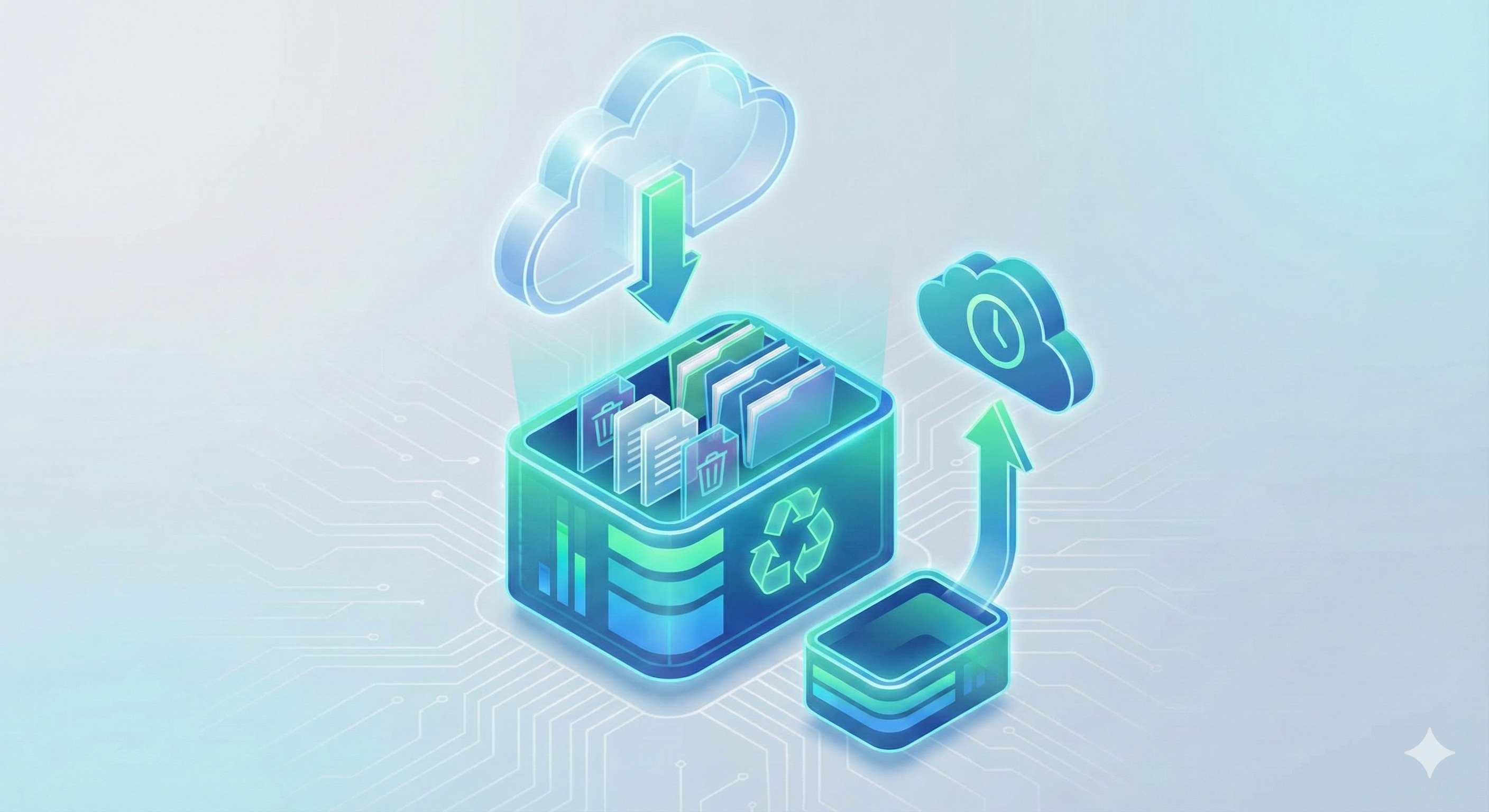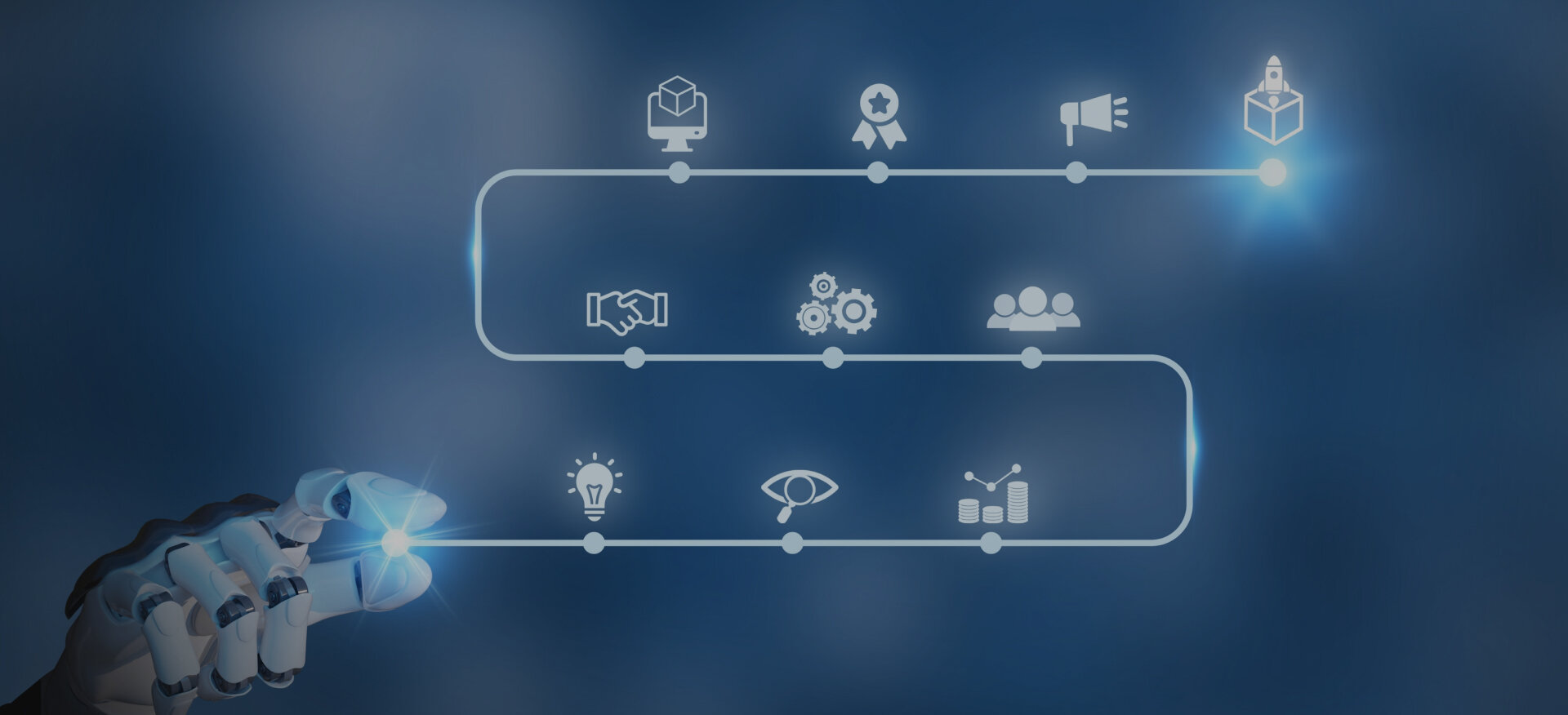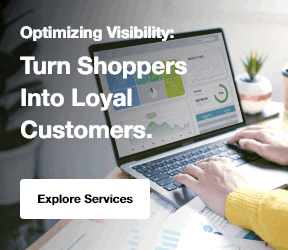Business-to-business (B2B) lead generation and business-to-consumer (B2C) demand generation share the goal of finding new customers, but their approaches differ markedly. B2B lead generation is often a narrow, highly targeted effort because each lead can represent a high-value, long-term deal. B2C demand generation, on the other hand, casts a wider net to build broad awareness and interest among consumers. In short, B2B marketers prioritize quality and relevance of leads, whereas B2C marketers emphasize volume and awareness.
Today, we live in the age of artificial intelligence and that’s changing the game for both B2B and B2C marketing. AI allows for hyper-personalized content and interactions at scale. Marketers can analyze vast amounts of customer data instantly and even generate tailored messages for each prospect. This is especially powerful for high-ticket B2B companies: when each customer is extremely valuable, delivering the right message to the right person at the right time can make all the difference.
Amidst this shift, relationship marketing is emerging as a critical strategy. Rather than just blasting out promotions, relationship marketing is about building genuine, long-term connections with prospects and customers. It’s here that a tool like LiProspect comes into play. LiProspect is a platform that leverages smart automation to help businesses build and nurture relationships, particularly through LinkedIn. It’s essentially reinventing relationship marketing by using AI and automation to do the heavy lifting of outreach, follow-ups, and personalization – all while keeping the human touch.
In this article, we’ll explore how B2B marketing is evolving from faceless campaigns to authentic engagement, and how LiProspect can help companies scale up their relationship-building without losing that personal feel.
Highlights
-
B2B vs B2C Marketing: B2B lead gen targets specific business decision-makers in a longer sales cycle, whereas B2C demand gen focuses on broad awareness and quick consumer conversions. The tactics differ, but both aim to create interest and drive sales.
-
Hyper-Personalization with AI: Modern tools use AI to tailor content to each prospect. This means high-value B2B prospects can receive highly personalized outreach at scale, something not possible a few years ago.
-
Account Based Marketing vs Relationship Marketing: Traditional Account-Based Marketing (ABM) can be content-intensive and often feels impersonal at scale. Relationship marketing takes a softer approach; engaging prospects on a human level through conversations, social interactions, and trust-building.
-
LinkedIn as a B2B Powerhouse: LinkedIn is the go-to social platform for B2B networking. It drives around 80% of B2B leads from social media, with 93% of B2B marketers using it and 84% calling it their most valuable channel. In B2B, if you’re not actively building relationships on LinkedIn, you’re missing out.
-
Smart Automation with LiProspect: Building and maintaining all these relationships manually is time-consuming. LiProspect offers an automated yet personalized way to expand your LinkedIn network, nurture contacts (e.g. sending connection requests, follow-ups, birthday wishes), and manage campaigns – acting like a relationship-centric CRM that works while you focus on your core business. Additionally, for businesses looking to increase their local visibility, local SEO for small businesses can help boost your presence within specific geographical areas, enhancing the chances of attracting relevant leads.
Account Based Marketing vs Relationship Marketing

While Account Based Marketing (ABM) offers a highly targeted and personalized approach to engaging high-value clients, it's not without its hurdles. From aligning sales and marketing teams to scaling personalized campaigns, ABM comes with unique challenges that can impact its effectiveness. Let’s take a closer look at some of the key obstacles marketers face when implementing ABM strategies, etc.
Challenges of Account Based Marketing (ABM):
In recent years, Account Based Marketing (ABM) has been a buzzword in B2B. ABM is a strategy where marketing and sales teams work together to target a specific set of accounts (companies) with customized campaigns. The idea is to treat each target account as a “market of one,” often requiring lots of tailored content – custom landing pages, whitepapers, case studies, and email campaigns – aimed at particular organizations or even individual stakeholders. ABM can yield great results, but it’s resource-intensive. Marketers often find that ABM requires creating a massive amount of content and personalization to do it right. In fact, many organizations struggle with ABM because they love the concept but underestimate the work involved in crafting high-quality, account-specific content.
Pitfalls of Account Based Marketing (ABM):
Another pitfall of ABM, especially when executed at scale, is that it can become impersonal and faceless. Paradoxical as it sounds (since ABM is supposed to be personalized), companies sometimes implement ABM by automating emails and ads to those target accounts in a way that feels like just another marketing blast. If every message is perfectly on-brand but obviously templated, the human touch can get lost. The result? Decision-makers still feel like they’re being marketed at, not engaged with. It’s a reminder that just because you know who your targets are doesn’t automatically mean you’ve built a relationship with them.
Dawn of Relationship Marketing:
This is where relationship marketing differentiates itself. Relationship marketing is about building a two-way connection over time – it focuses on familiarity, trust, and value rather than immediate conversion. Instead of hitting a prospect with a case study and a sales pitch right off the bat, relationship marketing might start with softer touches: follow their posts on LinkedIn and leave thoughtful comments, share an article that might interest them, congratulate them on a recent achievement. The goal is to become a known, trusted presence in the prospect’s professional life. Over time, when that prospect has a need, they’re more likely to think of the people and companies with whom they’ve built a rapport.
Role of Social Media in Relationship Marketing:
Social media plays a huge role in relationship marketing today. Particularly in B2B, platforms like LinkedIn allow for casual, non-intrusive interactions with stakeholders. Instead of cold-calling a busy executive (invasive and often unwelcome), you can connect on LinkedIn and gradually interact by engaging with their content or sharing your own useful content. This way, you stay on their radar in a friendly manner. LinkedIn allows you to put a face and personality to your company’s name, which is invaluable in an age where people prefer to do business with those they feel they know. Additionally, android application development services can help companies offer seamless mobile experiences that keep prospects engaged, providing easy access to content and services, and reinforcing the relationship-building process. As one networking expert noted, even in our digital era, the human element – trust and authenticity – remains at the center of business success. Relationship marketing embraces that truth, aiming to form genuine connections rather than just close deals.
Why LinkedIn is Critical to B2B Success
LinkedIn has firmly established itself as the primary social media platform for B2B networking and marketing. The statistics speak volumes: about 80% of B2B leads generated via social media come through LinkedIn. Other platforms like Twitter or Facebook simply don’t even come close in generating B2B opportunities. Additionally, 94% of B2B marketers distribute content on LinkedIn – basically, almost everyone in B2B marketing is leveraging this platform. It makes sense: LinkedIn’s user base consists of professionals, including millions of decision-makers and executives. In fact, as of 2025, 93% of B2B marketers use LinkedIn and 84% of them say LinkedIn provides the best value for their content distribution and lead generation efforts. If you’re selling to other businesses, your customers are likely on LinkedIn. Furthermore, for businesses focusing on regional growth, SEO for local businesses can be a powerful tool to improve local visibility and engage with the right prospects.
Beyond the numbers, think about user mindset. People on LinkedIn expect professional interactions. They are often looking to network, learn industry insights, or find solutions to business problems. Reaching out to a prospect on LinkedIn (with a genuine, value-adding approach) is generally considered normal professional behavior. It’s not seen as odd or intrusive in the way sliding into someone’s Text messages for a sales pitch would be. In fact, many professionals welcome connecting with industry peers, thought leaders, and solution providers on LinkedIn as long as it’s respectful.
Another reason LinkedIn is critical: it enables what’s known as social selling. Social selling is the art of using social networks to find, connect with, understand, and nurture sales prospects. LinkedIn provides tools like advanced search filters (via LinkedIn Sales Navigator), the ability to join industry groups, and a content platform (LinkedIn posts and articles) where you can demonstrate expertise. By consistently sharing insightful content and engaging with others’ posts, you build credibility. So when you reach out with a direct message, they recognize you and are far more likely to respond positively.
To sum up, LinkedIn is critical because it’s where professional relationships are formed and maintained in the digital age. It’s a giant networking event that’s happening 24/7 online. If you leverage it well, you can go from being an unknown vendor to a familiar name that prospects trust.
As CEO of Centric, Usman Khalid says, “Companies that empower their teams to utilize LinkedIn for relationship-building often see an uptick in inbound opportunities, partnerships, and sales leads that originate from a simple connection request or comment thread.”
How to Utilize LinkedIn to Build Relationships and Sell More
Having established why LinkedIn is so important, the next question is how to use it effectively without turning people off. Nobody enjoys those spammy LinkedIn messages that feel like a copied-and-pasted sales pitch. Successful LinkedIn relationship-building requires a thoughtful approach. Here are some best practices to keep your outreach effective and welcome:
-
Personalize Your Connection Requests: When you connect with someone new, always add a brief note instead of using the default invite. Mention how you have mutual connection often increases the acceptance by a factor of five.
-
Engage Before Selling: A golden rule of networking is to give before asking. In practice, this means share useful info before you ever make a pitch or ask for a meeting. Share an article or report they might find valuable, with no strings attached. By doing this, you’re providing value and building goodwill. When you eventually reach out with a direct ask, they’ll remember that you weren’t just out for a quick sale – you took time to build a genuine relationship. For example, if your services include Design services for B2C businesses, sharing insights or content related to design trends in the B2C sector can initiate an engaging conversation.
-
Keep It Conversational: LinkedIn isn’t email – the tone can be a bit more informal and friendly (still professional, but conversational). When you message someone, imagine you’re networking at an industry event. You wouldn’t open a face-to-face conversation with a 5-minute monologue about your product’s features. Likewise, don’t drop a 300-word sales pitch in a LinkedIn message. Start a conversation: ask a questions. For example, “I see that you are in retail business – how do you see tariffs impacting your business? It’s a concern I’m exploring and happy to help.” This invites dialogue rather than shutting it down.
-
Practice the 80/20 Rule: Aim to make 80% of your interactions on LinkedIn value-driven or relationship-focused, and no more than 20% overtly sales-oriented. If every time you message someone it’s to push a demo or deal, they’ll tune out. Mix it up. Sometimes, just check in: “Hi John, I noticed it’s been a busy quarter in your industry – hope your Q3 is going well!” Such touchpoints show you’re not only thinking of them when there’s money on the line.
-
Be Consistent and Patient: Building relationships (online or offline) doesn’t happen overnight. Consistency is key – regularly share useful content, routinely engage with your network’s updates, and periodically reach out to say hello. Over weeks and months, this establishes familiarity. Patience is important; not every connection will turn into a sale, and certainly not immediately. But some will turn into valuable conversations and opportunities over time. The seeds you plant now by being helpful may sprout into deals down the line.
Remember, the goal on LinkedIn is to nurture relationships, not just hit quotas. Ironically, by taking a relationship-first approach, you’ll likely end up selling more. People buy from those they trust. Using LinkedIn in the ways above helps you earn that trust in a scalable way.
Who Has the Time to Do All This?
By now you might be thinking, “This all sounds great, but maintaining these personalized touches and consistent engagement on LinkedIn sounds like a full-time job!” In a way, you’re right. Doing relationship marketing manually does take significant time and effort. Sales and marketing professionals already juggle dozens of tasks – prospecting calls, meetings, proposals, emails – so adding daily LinkedIn networking and personalized messaging can be overwhelming. Many B2B companies struggle to consistently implement these best practices simply due to time constraints and bandwidth issues.
This is precisely where automation and AI assistance step in as lifesavers. Modern platforms can handle a lot of the routine work while you set the strategy and add the truly personal touches when it counts. LiProspect, for example, is designed to be that helping hand. Think of LiProspect as an extension of your sales/marketing team that works 24/7 doing the tedious but important tasks: sending connection requests to targeted prospects, queuing up follow-up messages if someone doesn’t respond initially, and even monitoring for things like birthdays or job changes to trigger a friendly note. It’s LinkedIn automation, but it’s smart automation. You define how and when you want to reach out to people, and the platform executes it systematically.
The key benefit here is scale without sacrificing personalization. With a platform like LiProspect, you can maintain hundreds of LinkedIn conversations that would be humanly impossible to manage alone. Yet each prospect can still receive a tailored message with their name, relevant details, and context that you’ve specified. For instance, you could set a campaign that sends a custom welcome message to new connections followed by a helpful resource a week later if they accepted your request. All of this happens in the background once you set it up. From the recipient’s perspective, it still feels like you are personally reaching out and staying in touch.
Automation also ensures consistency. Instead of forgetting to follow up with a promising lead because you got busy, the system will handle it. You won’t miss opportunities simply due to human lapse. And importantly, good LinkedIn automation tools (like LiProspect) operate with human-like cadence. The messages go out at appropriate intervals and can even be randomized a bit to mimic natural sending patterns.
In short, while relationship building requires a personal touch, technology can do the heavy lifting in the background. LiProspect acts like a tireless assistant that never forgets a task. It lets you focus on the quality of interactions – for example, jumping on an actual call with a prospect once they respond – rather than the repetitive legwork of reaching out and nudging every contact. For time-strapped professionals, this means you can have a robust relationship marketing program without working 80-hour weeks. The age of AI and automation means we no longer have to choose between personalization and productivity; we can have both.
Build Value from Your Company’s Existing Reach
One of the most overlooked assets in many businesses is the network they already have. Before chasing fresh leads, it’s wise to tap into the value of your existing connections and relationships. In large organizations, information silos often prevent this from happening. Marketing might be running campaigns without realizing that Sales already has warm connections at certain target accounts. Or one sales team member might not know that a colleague is connected with a decision-maker they’re trying to reach. These missed connections are low-hanging fruit for relationship building – the trust is partially there; it just needs to be activated.
Start by looking inward: Who is your company already connected to? This includes your current customers, past customers, partners, and even all the LinkedIn connections of your team members. It’s not uncommon for a mid-size company to collectively have thousands of first-degree LinkedIn connections when you add up all employees. Hidden in that extended network could be potential clients and referrals. However, without a system, it’s hard to leverage. Large sales teams often struggle to answer simple questions like “Does anyone here know someone at Company X?” because there isn’t a shared view of connections.
LiProspect can help manage and segment your LinkedIn network more effectively. For example, LiProspect automatically imports your first-degree connections and organize them into segments (by industry, job title, how you met, etc.). Suddenly, those 2000+ LinkedIn contacts you personally have aren’t just a blurry list of names – they’re categorized into meaningful groups. You might discover you have 50 contacts in the finance industry, including 10 CFOs, who you haven’t spoken to in over a year. That’s 10 potential conversations waiting to be rekindled, perhaps with a quick message like “Hey, it’s been a while since we caught up – how are things going at [their company]?”
Another common scenario: information silos in CRM systems. Your company’s CRM might log official leads and customers, but it likely doesn’t capture informal connections like “Our head of engineering went to college with the CTO of that prospect” or “Our sales rep X is LinkedIn connections with a board member of that company.” Those tidbits usually live in people’s heads. By encouraging your team to use a platform like LiProspect’s team or network features, you can make those hidden links visible.
In summary, don’t let your existing reach go to waste. Map it out and extract value from it. Oftentimes, businesses chase new contacts while ignoring that they already have a foot in the door in many places. A concerted relationship marketing effort means nurturing the relationships you already have, not just pursuing new ones. That might mean systematically reaching out to dormant contacts with a friendly update, sharing relevant news with past clients, or simply staying top-of-mind with your broader network. Your next big deal could very well come from a chain of connections that began with someone who’s been in your LinkedIn list for years. LiProspect helps by turning that nebulous network into actionable data – so you can build value from it instead of leaving it untapped.
Expand Your Network

After you’ve organized your existing network, the next step is to strategically expand it with new, high-potential contacts. Growing your LinkedIn network in a targeted way is much more fruitful than just amassing random connections. LiProspect facilitates this through different types of LinkedIn automation campaigns, each suited to a particular approach. Here are a few ways you can expand your reach:
-
Basic LinkedIn Campaigns: This refers to using a standard LinkedIn account (no special premium features required) to connect with people. Typically, you might use LinkedIn’s basic search or look at the “People also viewed” and “People you may know” suggestions. A basic campaign can systematically send connection invites to a manual list you curate (say, all the CMOs in your city). It’s a straightforward way to grow your network within a certain profile of people.
-
Sales Navigator Campaigns: LinkedIn Sales Navigator is a premium tool that unlocks advanced search filters. With Sales Navigator, you can zero in on very specific criteria – for instance, “HR managers in companies with 500–1000 employees in the healthcare industry in Houston, Texas.” A Sales Navigator campaign in LiProspect send connection requests (with personalized notes) to those prospects, a few each day. This lets you hyper-target who you add to your network, ensuring they fit your ideal customer profile. The advantage is quality: you’re connecting with exactly the types of people who are likely to need your product or service.
-
Custom Import Campaigns: Sometimes you already have a list of leads from outside LinkedIn – perhaps from a trade show, webinar, or a database like Apollo and ZoomInfo. Apollo and ZoomInfo allow you to build lists of contacts complete with details like name, company, title, and their LinkedIn profile URLs or emails. Instead of reaching out via cold email alone, you can import this list into LiProspect. The tool will match the data to LinkedIn profiles and then initiate connection requests or messages. This Custom Import approach is powerful for hyper-targeting: you’re essentially hand-picking exactly who to reach out to based on rich data from those services. For example, you could import a list of “CTOs at fintech startups in Silicon Valley that use AWS” that you got from Apollo. LiProspect would then help you connect with them on LinkedIn, combining the precision of an external database with the personal touch of a LinkedIn invite.
-
Post Engagement Campaigns: A clever way to find warm prospects is through LinkedIn post engagement. Let’s say your company (or an industry influencer) posts content that gets a lot of likes and comments from people in your target audience. Those engagers have essentially signaled interest in the topic. LiProspect can set up a campaign to collect the profiles of people who reacted or commented on a particular post, and then send them connection requests or messages. The intro message might be along the lines of, “Hi [Name], I saw we both enjoyed [Influencer’s] discussion on supply chain innovation. It’s a topic I’m passionate about as well – would love to connect and keep the conversation going.” These kinds of outreach messages work well because you’re referencing a shared experience (engaging with the same content), making the approach feel natural and relevant.
By leveraging these different campaign types, you systematically grow your LinkedIn network with the right people. Over time, your network expansion isn’t random; it’s aligned with your business goals. If you’re a sales manager, you’re steadily connecting with potential buyers in your territory. If you’re a recruiter, you’re connecting with candidates in the fields you hire for. Each new connection is a door to a future opportunity, and using automation ensures you’re opening a lot of doors continuously.
Importantly, LiProspect keeps these outreach campaigns organized and manageable. You’ll know who is in which campaign, who has accepted your connection, who responded, and who hasn’t. The platform can auto-follow-up if someone didn’t accept your connection request, gently liking their posts or endorsing their a few days later so you can stay on top of mind. This way, expanding your network doesn’t become chaotic – it’s a strategic, trackable process.
Build Deeper Relationships
Expanding your network is only half the battle; the real magic is in deepening those relationships so that acquaintances become prospects, and prospects become clients or partners. Building deeper relationships means staying engaged over the long term and showing that you value the person beyond just the initial contact. Here are some ways to do that, many of which can be enhanced with a bit of automation:
-
Celebration Campaigns (e.g., Birthdays and Work Anniversaries): One of the easiest opportunities to touch base with someone is on a day important to them. LinkedIn conveniently notifies you of your connections’ birthdays, job changes, and work anniversaries. Rather than just clicking the generic “Say happy birthday” button take it up a notch. Send a personal message. Nothing says more than I do not care about you than a generic or platform recommended birthday message. Send out custom thoughfully written birthday wishes through LiProspect. Crucially, don’t mix in any sales pitch here – just genuine well-wishes. Let birthdays be birthdays; it’s about them, not you. The impact of a simple friendly message can be surprisingly positive. Your contact feels good and remembers that you remembered. It keeps the relationship warm. With LiProspect, you can automate these celebration messages so that you never miss a date – the platform can log your contacts’ birthdays and work anniversaries and automatically send out a pre-set personalized note on those days. It’s a set-and-forget way to ensure you’re consistently engaging in small but meaningful ways.
-
Don’t Underestimate Small Gifts or Gestures: For contacts that are particularly important (say a top customer or a very promising prospect you’ve been nurturing), consider going beyond the digital realm. A handwritten note or a small gift on a special occasion can be incredibly impactful. There are third-party services that automate gift sending. For example, services like Sendoso or Giftogram can send a coffee e-gift card or a treat with a personal note to someone’s physical or email address. Imagine your prospect receives a Starbucks gift card on their work anniversary with a note: “Congrats on 5 years at [Company]! Coffee on us as you celebrate – Cheers, [Your Name].” These gestures, while requiring a bit of budget, can set you apart from the sea of digital-only interactions. And yes, even gifting can be automated to a degree – you input the recipients and dates are fetched from LiProspect, and a third party service handles the logistics. It’s a way to scale goodwill.
-
Maintain Authenticity: Whether it’s an automated message or a manual one, always keep it authentic. The goal of all these tools and campaigns is to foster genuine relationships. Use automation to handle the when and who, but ensure the what (the content of your message) feels real and sincere. If LiProspect sends out 500 birthday messages on your behalf in a month, make sure you wrote a message template that sounds like you and conveys real warmth. Automation should never mean robotic. The best relationship marketing automation is almost invisible – the recipient just feels like you remembered them and reached out.
By systematically doing these things, you breathe life into relationships that might otherwise stagnate after the first connect. Many people have hundreds of LinkedIn connections they never interact with – those are essentially dead connections. With a little effort, you can turn a dormant contact into an active one. Maybe that birthday message turns into a brief catch-up chat which uncovers a business opportunity. Or that congrats on the new role leads them to say, “We actually might need your services at my new company.” The ROI of keeping relationships warm is real, even if it’s not always immediately quantifiable.
LiProspect essentially serves as a relationship CRM, automating when to reach out to keep the friendship (business friendship) alive. Over time, this kind of consistent, thoughtful engagement builds a network of allies. You’re not just someone who connects and forgets; you’re the one who stays in touch, who congratulates, who remembers. That reputation pays off massively in B2B. When a need arises, who will they call? Likely the person who has been steadily part of their professional world – which could be you, thanks to your relationship-building habits.
Fully Managed Service – Powered by Centric
For organizations that want the benefits of relationship marketing and LinkedIn automation without the added workload, Centric offers a fully managed LiProspect service. This solution is ideal for businesses that want to scale fast, build meaningful connections, and focus on closing deals—without getting bogged down in the backend logistics.
Here’s what the Fully Managed Service includes:
-
Strategic Campaign Building: Our Relationship Marketing Experts will work closely with your leadership and sales teams to understand your business goals and build targeted drip campaigns that reflect your brand voice and goals. These aren't cookie-cutter messages—they’re thoughtfully crafted touchpoints built on proven best practices in LinkedIn outreach and engagement.
-
Organized Relationship Management: We help you bring structure to chaos. From importing and segmenting your existing LinkedIn connections to organizing outreach cadences and engagement triggers, our team ensures your entire contact network becomes an asset your sales team can activate.
-
Hyper-Targeted Audience Building: Once you share your ICP (Ideal Client Profile), our strategists take over. We’ll identify and build high-quality target lists—leveraging tools like LinkedIn Sales Navigator, ZoomInfo, and Apollo—and then expand those lists with additional prospects you may not have considered. Your team stays focused on selling, while we keep the funnel full.
-
Weekly Leadership Sync: For teams of up to 20 salespeople, all we need is one hour per week of your time. In this brief but powerful meeting, we present performance insights, share warm leads, and offer campaign tweaks based on what's working best. You walk away with actionable data, and your team walks into the week equipped with fresh conversations and clear direction.
In short, Centric makes sure that relationship marketing becomes a strength of your organization, not a stressor. You get the benefits of expert strategy, flawless execution, and consistent reporting—all with minimal lift from your team.
Conclusion
In a world overwhelmed by automated emails, cold calls, and impersonal marketing blasts, focusing on relationship marketing is like a breath of fresh air. People do business with people they trust. By reinventing relationship marketing with the help of modern tools, companies can scale trust-building in a way that simply wasn’t possible before. LiProspect embodies this reinvention – it’s like giving every member of your sales and marketing team an intelligent assistant who never forgets a name, a face, or a birthday. It allows you to be proactive and consistent in nurturing leads and connections, effectively becoming the LinkedIn-savvy CRM that keeps your top-of-funnel pumping with warm opportunities.
Think of LiProspect as the guardian of your network. It keeps track of who you know, who you should know, and how you can deepen each relationship. It frees you from the minutiae (sending invites, following up, scheduling messages) so you can focus on the meaningful interactions. In essence, it ensures that no potential prospect or valuable contact falls through the cracks simply because you were too busy to remember to reach out.
For any modern business, especially in B2B, leveraging a platform like this isn’t just a nice-to-have – it’s becoming essential. Just as CRMs became fundamental for managing sales pipelines, relationship automation tools are becoming fundamental for managing social selling and outreach. They amplify your efforts, allowing a small team (or even a solo professional) to have an outsized presence and impact. You can be nurturing dozens of conversations while you sleep, literally.
Ultimately, relationship marketing reinvented through smart automation is about balance. It’s the perfect blend of high-tech and high-touch. You use technology to be more human, not less. The companies and professionals who master this will find themselves with a strong network of engaged contacts, a rich pipeline of genuine leads, and a reputation in the market as someone who cares. It’s a strategic advantage that yields compounding returns: each relationship might open the door to several more, and each satisfied connection could become an advocate for your brand.
The companies that embrace this approach to relationship marketing will likely outshine those that stick to purely transactional tactics. It’s not just about selling more (though that will happen); it’s about building a community around your business – a network of people who feel connected to you and, by extension, inclined to work with you. And that is something no amount of cold advertising can buy. It has to be earned through consistent, genuine engagement. Fortunately, now we have the tools to do it at scale. Relationship marketing is being reinvented, and with LiProspect, it’s easier than ever to be part of that revolution. Here’s to forging relationships that last – and doing it in a smarter, more efficient way than ever before.
Ready to see how LiProspect can transform your relationship marketing? Book a free demo with our experts and explore how we can tailor a strategy for your team.








